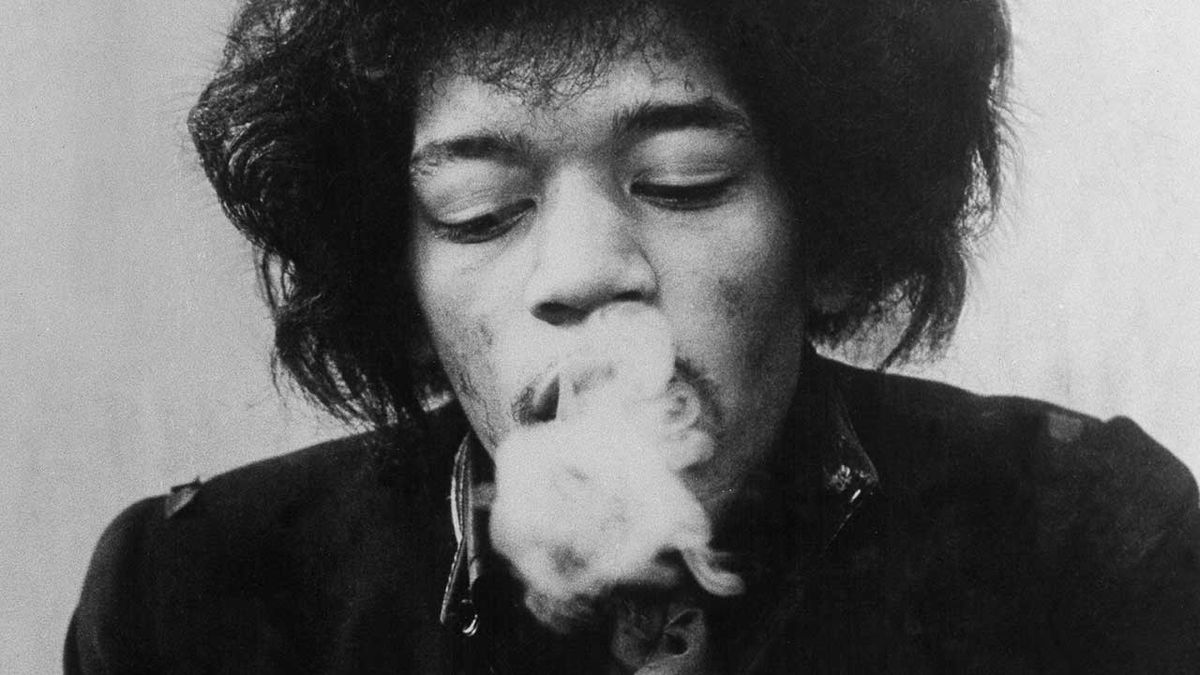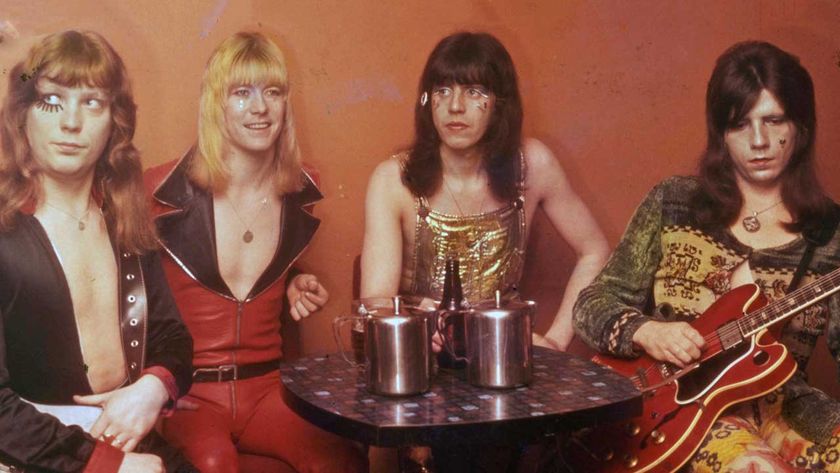Here are ten essential songs from Jimi Hendrix released after 1970 that clearly demonstrate why he remains the world’s most influential guitarist.

Freedom (First Rays Of The New Rising Sun)
In 1971, The Cry Of Love showed that death was only a minor obstacle to Jimi’s continuing output. With the pick of his vaults to choose from, it was the first posthumous Hendrix record, and unmatched until 1997’s First Rays Of The New Rising Sun made a more accurate job of approximating what would have been his next album.
It peaks at the off with Freedom, a thrill-ride rocker that rattles along on chippy riffs, falling-down-the-stairs drums, a hot-buttered funk breakdown and cries of ‘Freedom!’ pinballing around the mix like an Arab Spring revolution. Released as a single, Freedom scraped inauspiciously to US No.59, but it’s Hendrix bobbing near the top of his game.
Earth Blues (People, Hell And Angels)
It’s fair to say that Earth Blues has been around the block, with its pugnacious riff cropping up on beyond-the-grave compilations from 1971’s Rainbow Bridge to 1999’s Live At The Fillmore East. All have their merits, but in the desert-island scenario, you’d pick this newly exhumed version, representing Take 15 from a December 1969 session at New York’s Record Plant.
It was recorded against a backdrop of litigious strife, as Hendrix laboured to work up material for an album owed to Capitol Records, but you’d never guess that from the spring-heeled bounce and infectious howl of bassist Billy Cox and drummer Buddy Miles’s backing vocals.
Valleys Of Neptune (Valleys Of Neptune)
Don’t bother with the demo that limped on to 1990’s Lifelines box set; the full-band title track from the 2010 release Valleys Of Neptune surely comes closer to realising the song Hendrix spent the last year of his life chasing down.
Recorded at two separate sessions at the Record Plant in New York (in September 1969 and May 1970), it’s a superior psych-rocker, with Jimi’s jazzy guitar intro breaking into a strut that’s anchored by Mitch Mitchell’s gunshot drums, Billy Cox’s wandering bass and the percussion of Juma Sultan. The lack of a guitar break suggests that perhaps Jimi still had something up his sleeve, but of course we’ll never know.
Angel (West Coast Seattle Boy)
While the definitive take of Angel is the one recorded on July 23, 1970 at Electric Lady Studios in New York City, with drummer Mitch Mitchell and bassist Billy Cox, the first recording of the song was a demo recorded at Olympic Sound Studios in London on October 14, 1967.
Jimi wrote the first draft of the song’s lyrics, inspired by a dream he had about his mother, Lucille, in early ’68. Interestingly, Angel was originally titled Little Wing, before briefly being renamed Sweet Angel as it gradually developed into the beautiful final version. The ‘other’ Little Wing (on Axis: Bold As Love) became Jimi’s best-loved ballad.
Ezy Rider (First Rays Of The New Rising Sun)
The writing of Ezy Ryder (sometimes known as Lullaby For The Summer) was influenced by Peter Fonda, Dennis Hopper and Terry Southern’s 1969 movie Easy Rider (The Jimi Hendrix Experience had contributed If Six Was Nine to the film’s soundtrack), and was recorded at two sessions at the Record Plant.
A basic track was laid down on December 18, 1969, and it was finished on January 20, 1970. Joining Jimi on the sessions were his Band Of Gypsys: bassist Billy Cox and drummer Buddy Miles. Percussionist Juma Sultan, who had performed with Hendrix at Woodstock, played on the recording, and Traffic’s Steve Winwood and Chris Wood provided the backing vocals.
Can You Please Crawl Out Your Window (BBC Sessions)
Hendrix loved Bob Dylan. He also liked to use BBC radio recording sessions as opportunities to studio-jam on songs outside the Experience’s standard repertoire, be they venerable blues standards like Catfish Blues or recent hits such as The Beatles’ Day Tripper.
Here he and the Experience career delightedly through a Dylan semi-obscurity (the 1966 follow-up single to Positively 4th Street, and similarly uncollected on album at the time). Hendrix’s vocal delivery becomes more and more Baaaaaaab-like as the song progresses – it’s almost as much fun to listen to as it must’ve been to play.
Look Over Yonder (South Saturn Delta)
This throbbing slab of psychedelic blues was cut by Jimi and the Experience during a session at TTG Studios in Los Angeles on October 22, 1968. It was actually ex-Animals vocalist Eric Burdon, by this time firmly entrenched in LA, who introduced Jimi to the studio, and by all accounts he, Mitch Mitchell and Noel Redding were blown away by the sound there.
Look Over Yonder burns with some of Jimi’s most incendiary guitar playing ever captured on tape, with sheets of feedback, wild vibrato and extreme whammy-bar dives. Only his Woodstock Star Spangled Banner freak-out matches it for sheer Strat abuse.
Dolly Dagger (First Rays Of The New Rising Sun)
Recorded at Electric Lady studios on July 1, 1970, Dolly Dagger sounds like a cool throwback to Jimi’s R&B circuit days. Rock gossip has it that the song was inspired by the shenanigans of Jimi’s on/off girlfriend Devon Wilson.
The story goes that she threw a birthday party for Jimi, and invited Mick Jagger, who she also apparently had a ‘soft spot’ for. When a wine glass broke and cut Mick’s finger, Devon began sucking on the bloody digit. Hence Jimi’s line in the song: ‘She drinks blood from a jagged edge.’
Bleeding Heart (Valleys Of Neptune)
Jimi took his first stab at this 1961 Elmore James blues classic in the mid‑60s as a member of Curtis Knight & The Squiers. He later recorded a slow blues version (available on the Blues compilation) with Billy Cox and Buddy Miles on March 18, 1969, at the Record Plant.
But it’s the funky-as-hell version he recorded in the same studio on April 24, 1969, with Billy Cox and stand-in drummer Rocky Isaac, that comes closest to matching the intensity of the Elmore James original. Sonically cleaned up by producer/engineer Eddie Kramer, it was released as a single in March 2010.
Drifting (First Rays Of The New Rising Sun)
Second only to Angel as a prime example of the ‘gorgeously yearning psychedelic ballad’ section of Hendrix’s track stockpile. Drifting is Hendrix at his most delicately melodic and exquisitely melancholic, from its chiming intro with one backwards guitar floating lazily overhead into the seascape (‘of forgotten teardrops’) depicted in the lyric, delivered in Hendrix’s softest, warmest tones, and sailing gently through an entire oceanic waterworld of intertwined processed guitars.
One of Hendrix’s most thoroughly dreamlike pieces, and certainly one of his most rhapsodically beautiful, it’s also blessed with a serpentine melody and guitar-orchestra textures to sink into and drift away on.














